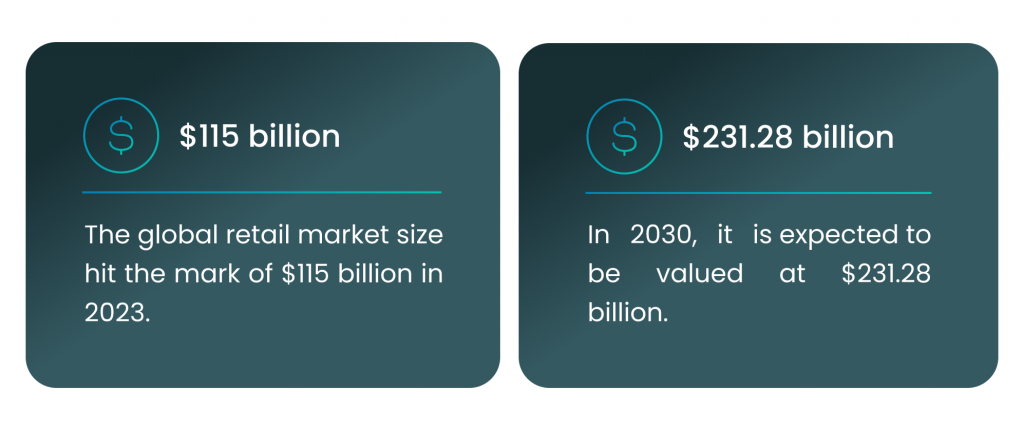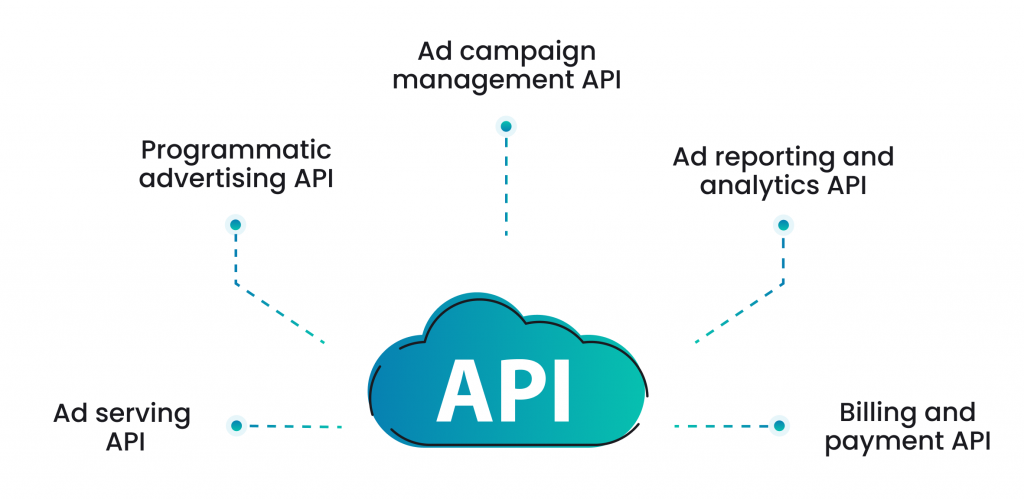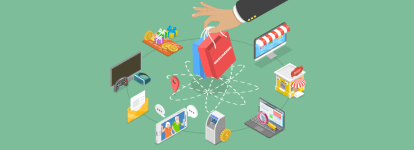The popularity and the role of retail media platforms in the ad space are continuously growing. The global retail market size hit the mark of $115 billion in 2023. And in 2030, it is expected to be valued at $231.28 billion. The shift from traditional advertising to its digital formats is one of the boosters for businesses to think about launching their retail media networks. With more than 60% of US retailers planning to implement their RMNs by the end of 2024, such platforms become not just a competitive advantage but a must-have for retailers.

Given the demand for such solutions that we can observe in the industry, we have prepared this step-by-step checklist for retail media platform development.
Step 1. Deep Planning and Strategy Development
The importance of planning can’t be underestimated. There are many things to do and think about before you build a custom retail media platform. Here are the most important points:
Set your goals. You should have precise objectives that you want to achieve. What could it be? For example, you may have such goals as increasing your revenue, boosting sales across your channels, providing high-quality personalized experiences to customers, etc. You shouldn’t opt for only one point. However, all of them should be clearly stated.
Identify your target audience. Based on your business specifics and the niche you work with, you need to determine the groups of brands, advertisers, and agencies your platform will serve.
Choose the types of advertising that will be available for users of your platform. Retail media networks traditionally cover all the channels across retailers’ ecosystems. They are usually websites, marketplaces, mobile apps, social media, and email campaigns. Given this, the most commonly available ad types are display ads, video ads, advertising in search, etc. You can also include some offline capabilities and offer in-store advertising on screens.
Determine the key functionality. The majority of retail media platforms have a basic set of features. However, some extra functionality can significantly differ depending on the retailer’s needs and target audiences. For example, a platform may be enriched with tools for ad inventory management, audience segmentation and targeting, bidding, real-time auctions, ad serving and delivery, ad campaign management, reporting, and analytics.

In one of our articles, we’ve explained what retail media networks are and what benefits they can bring to your business.
Opt for the most appropriate monetization model. Before proceeding to the custom retail media platform development process, you must understand how it will generate revenue.
Monetization options may vary depending on the types of ads that you can place across your channels.
- CPC (cost per click). Brands pay every time a user clicks on the sponsored product.
- CPI (cost per impression). Charges are taken based on the number of impressions.
- CPM (cost per mille). Advertisers pay for every 1,000 impressions their ads receive. In this case, it doesn’t matter whether users click on the ad or not.
- CPA (cost per acquisition). Brands pay for conversions driven by the ads.
- Flat fees. You can charge a fixed rate for premium ad placements.
- Sponsored offers. This approach presupposes that brands pay to be featured in loyalty programs, emails, or app notifications.
- RTB (real-time bidding). This model is widely applied in programmatic advertising. Advertisers pay based on the auction price for ad placements.
Hire a development team. When planning to build your custom retail media platform, assign this task to a team with relevant expertise. If you do not have in-house developers, it will be a good idea to work with a professional company like Geomotiv that specializes in building AdTech solutions in the retail media domain.
Step 2. API Development and Integration
To make your platform operational, it will be necessary to develop special APIs. They will enable communication between different parts of your system. Moreover, the use of APIs allows developers to follow the principle of modular architecture and make the software more secure.
Your API integration needs will be fully based on the desired functionality of your platform. APIs can enable such features as ad placement, targeting, reporting, payment processing, and connections with other systems.
Here’s a couple of examples of APIs you may need:

- Ad serving API. It will determine ad positions based on targeting parameters and manage the delivery of ads across the retail media platform. It can also monitor users’ interaction with ads (impressions, clicks, and conversions) in real-time.
- Programmatic advertising API. It will integrate a demand-side platform (DSP) and enable the automatic buying and selling of ad inventory via real-time bidding.
- Ad campaign management API. It allows brands and advertisers to create, manage, and optimize their ad campaigns on the retail media platform.
- Ad reporting and analytics API. This API can offer performance insights and metrics for both retailers and advertisers. It also supports A/B testing, which helps determine the most efficient creatives and ad placements.
- Billing and payment API. It manages payments for ad campaigns and handles billing between retailers and advertisers. Such APIs can also help retailers prepare and provide invoices and billing invoices to advertisers.
Step 3. Data Management and Security Compliance
Data will be the most valuable asset that your platform will interact with. The key peculiarity of retail media networks is that they work with first-party data. It means that advertisers and brands will have the possibility to rely on the information that you collect directly from your customers. Such info can provide actionable insights into people’s needs, interests, and preferences. As a result, well-targeted ad campaigns powered by first-party data can demonstrate high efficiency and excellent ROI.
However, with great power in the hands of retailers comes great responsibility. It is not enough just to accumulate this data. It is also necessary to manage it correctly.
As a rule, retailers rely on data management platforms (DMPs) to collect and organize customers' data. While some businesses have custom solutions, many use ready-made platforms like Oracle BlueKai Data Management Platform or Liveramp.
It’s also crucial to think about the protection of the data that you work with. CCPA and GDPR strictly regulate the use of first-party data. To stay operational in your jurisdiction, your retail media platform should meet all the applicable regulatory requirements.
Security vulnerabilities can pose serious threats to your reputation. That’s why you also should pay attention to the security features of your tools. Today, well-protected tools offer multifactor authentication, end-to-end encryption, and role-based access control.
Step 4. Personalization and AI Integration
The most efficient ads can offer solutions to customers’ needs. And here is when AI-powered personalization should enter the game.
AI algorithms can analyze huge volumes of data, such as users’ preferences and demographics, and detect patterns of people’s behavior. As a result, people will see more relevant ads, which can greatly increase conversion rates. Artificial intelligence can change ad creatives based on real-time user data, adjusting the message, images, or offers for better engagement.
You can rely on this technology not only for placement but also for personalized recommendations. AI-driven engines are powered by collaborative filtering and content-based algorithms. As a result, they can suggest personalized products, ads, or promotions based on user preferences and similarities to other customers and their choices.
Moreover, thanks to AI integration, you deliver consistent experiences across multiple channels, including web, mobile app, email, and in-store.
Step 5. Testing, Continuous Monitoring, and Optimization
Testing and monitoring are essential elements of custom retail media advertising platform development. Before launching your solution and making it publicly available to advertisers, you should ensure all its components function as they should. It could be sensible to start with a pilot launch. You can roll out the platform to select advertisers to gather feedback before full-scale deployment.
Monitoring how your platform and placed ads are performing is also crucial. Applying AI analytics can be a good idea for performance optimization. Such tools can process a lot of data, define problematic areas, and detect any signs indicating potential issues.
We also recommend you continuously enhance the user experience for advertisers. You can update your platform with new features and better reporting tools.
Moreover, it can be helpful to build cooperation with brands, ad agencies, and external data providers. Such partnerships can significantly increase the value of your retail media platform.
Final Word
Launching a retail media platform unlocks significant new revenue opportunities for retailers and provides advertisers a highly effective way to reach consumers. In an increasingly competitive retail environment, the development of such a platform can become a time-proven investment.
By establishing more meaningful relationships with brands and consumers, retailers can significantly strengthen their positions in the industry.
However, to leverage all the benefits that such a solution can offer, you need to have AdTech experts by your side.
At Geomotiv, we are always ready to help and guide you through this journey. Do not hesitate to contact us and share your ideas.




